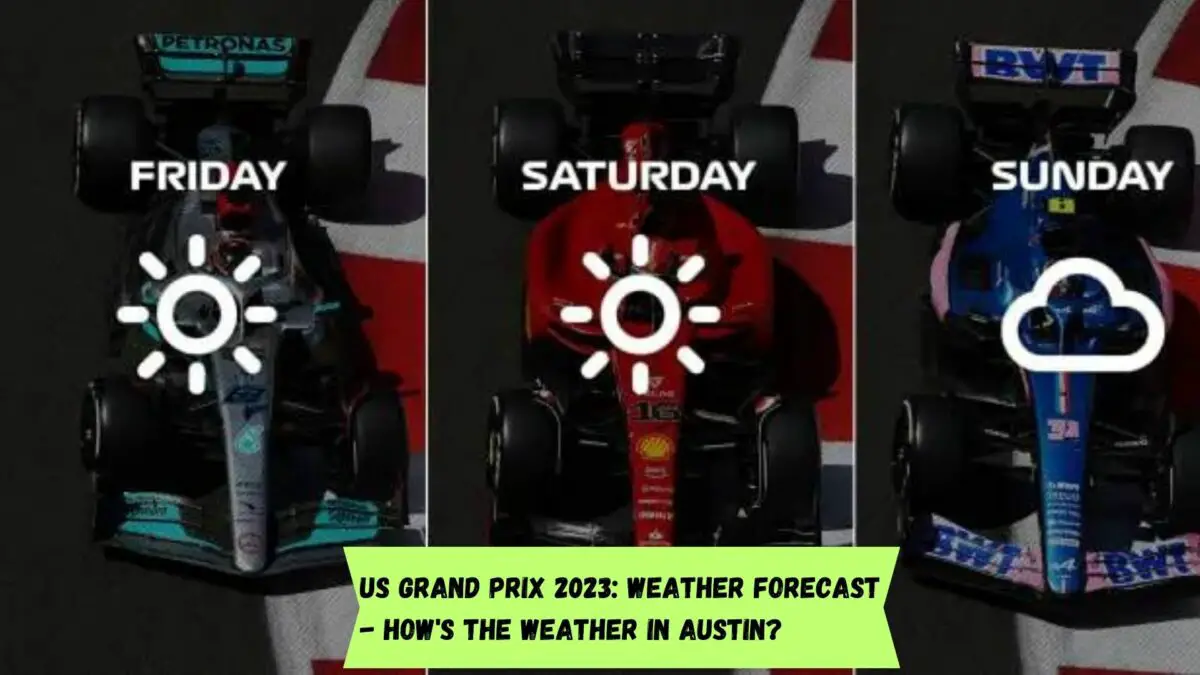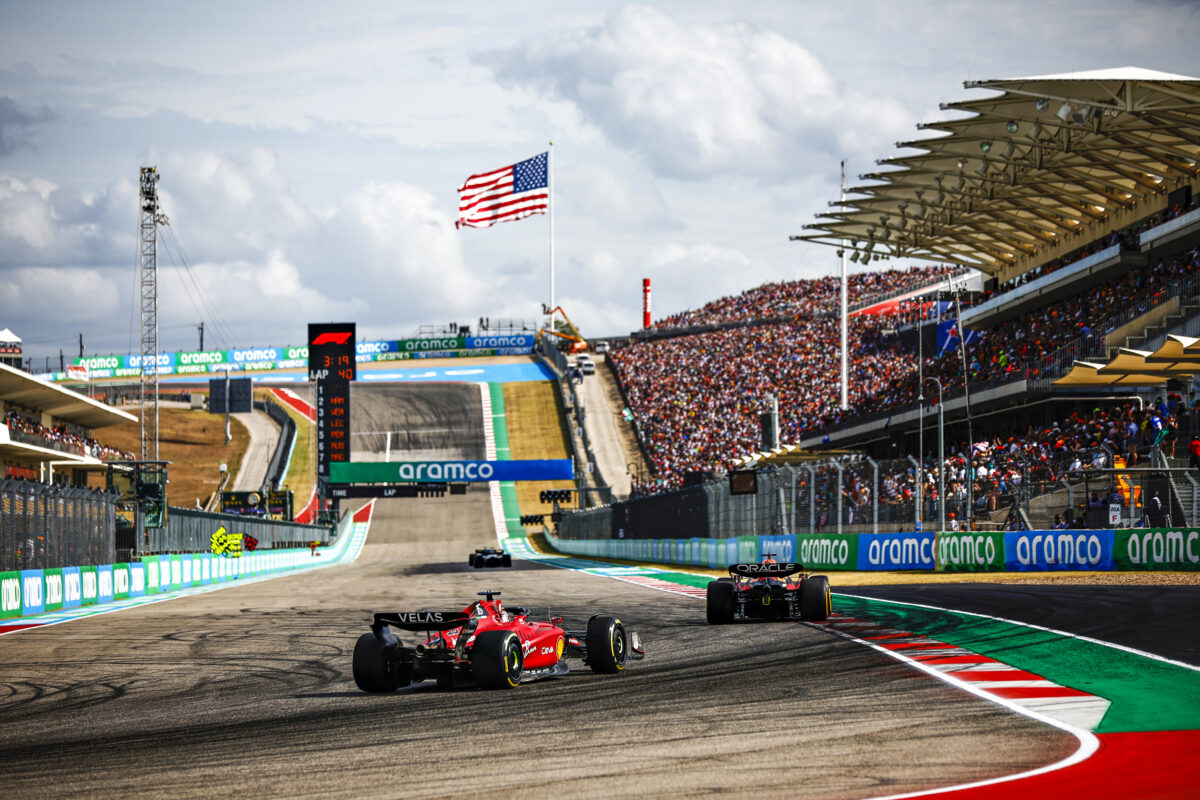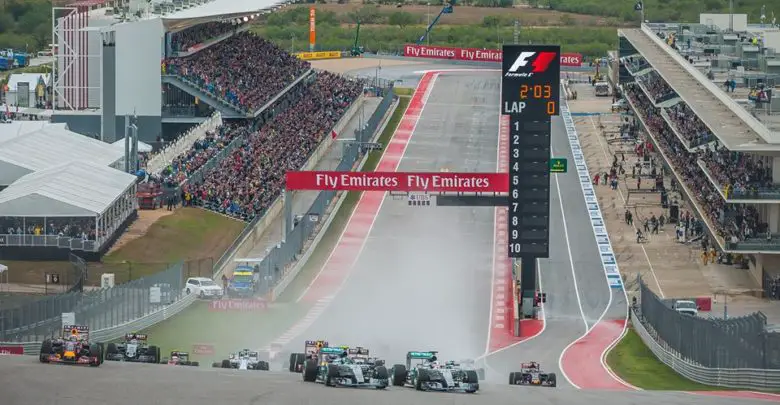Let us take a look at the weather forecast for the US Grand Prix, scheduled to take place this weekend at the Circuit of the Americas

F1 action moves to Texas this weekend for the much-anticipated US Grand Prix. It is scheduled to take place from October 20-22. Let us now take a detailed look at the weather forecast for this weekend’s United States GP.

Expect favorable weather conditions for the Texas weekend, as the forecast indicates minimal chances of rain. The temperatures will be suitable for racing, staying around 22-23 degrees Celsius for the entire weekend, which should not pose a significant concern. However, it’s worth noting that both the Sprint Race day on October 21 and the main race on October 22 are expected to have cloudy conditions.
Friday promises a sunny, warm, and bright day, ensuring a smooth practice session. Saturday’s Sprint qualifying session and Sprint race will be under cloudy skies, with low chances of rainfall. The main race on Sunday is anticipated to have partly cloudy conditions, with temperatures suitable for racing. While the risk of rain on race day is relatively low, it’s essential to remain cautious as weather conditions can change rapidly. Fans and teams will be hoping for a rain-free race weekend.
US Grand Prix 2023 – Schedule
Here’s how the schedule for this weekend’s US Grand Prix looks like:
Practice 1: Friday, October 20 – 23:00 IST
Qualifying: Saturday, October 21 – 02:30 IST
Sprint Shootout: Saturday, October 21 –23:00 IST
Sprint: Sunday, October 22 – 03:30 IST
Race: Monday, October 23 – 22:30 IST
US Grand Prix – Weather History
The history of weather at the US Formula 1 Grand Prix has been marked by a range of climatic conditions, adding an element of unpredictability and excitement to the racing. The United States Grand Prix has been hosted at various venues, but one of the most iconic is the Circuit of the Americas (COTA) in Austin, Texas. The climate in Austin is known for its variability, with hot summers and occasional rain. In recent years, rain has played a significant role in the races, affecting strategies and outcomes.

In 2015, the US Grand Prix at COTA saw a downpour that led to the race being postponed from Sunday to Monday, marking one of the rare instances of a Formula 1 race rescheduled due to weather. This dramatic turn of events added an extra layer of suspense and challenge for both drivers and teams.
The 2018 race witnessed a mix of wet and dry conditions, making tire choices critical. Kimi Räikkönen, driving for Ferrari, secured his first Grand Prix victory in over five years in a thrilling race where weather conditions played a key role. Overall, the history of weather at the US Formula 1 Grand Prix reflects the ever-present challenge of adapting to changing conditions, making it an enduring aspect of the sport, as drivers and teams need to be prepared for anything nature throws their way.
Circuit of the Americas – Weather Pattern
The Circuit of the Americas, located in Austin, Texas, experiences a diverse weather pattern throughout the year. Summers in the region are typically hot and dry, with temperatures often exceeding 90°F (32°C) in July and August. This can make attending events at the circuit uncomfortable for spectators and challenging for drivers who must cope with high track temperatures.
In contrast, winters in Austin are relatively mild, with daytime temperatures averaging around 60°F (15°C). However, occasional cold fronts can bring colder and wetter conditions, making it necessary to be prepared for variable weather during the racing season.

Spring and fall offer more temperate weather, with comfortable temperatures and lower humidity, making these seasons ideal for motorsport events. Rainfall is relatively evenly distributed throughout the year, but the risk of thunderstorms and heavy rain is higher in the spring and early summer months, which can affect races and practices.
The unpredictable weather conditions at the Circuit of the Americas can add an extra layer of excitement and challenge for both drivers and spectators, making it essential to be prepared for a wide range of weather scenarios when attending events at this world-class racing venue.
More Formula One News
- Lewis Hamilton doesn’t support IOC’s decision on Black Lives Matter gear during Olympics
- Max Verstappen left surprised as he reaches 100 race milestone with Red Bull
- Damon Hill left in awe after Lewis Hamilton racks up 100 poles in F1 ahead of 2021 Spanish GP
Follow our dedicated Formula One page for instant Formula One news and updates

